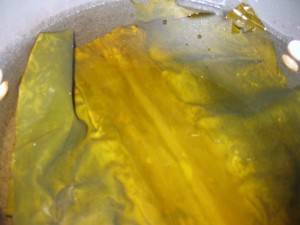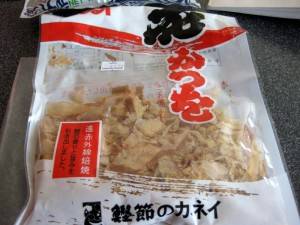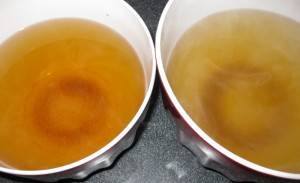 Many recipes call for some sort of flavorful liquid. Sometimes it’s wine, juice, or pureed vegetables, but often they call for broth or stock. The main difference between broth and stock is that stock contains bones, where as broth can be made from just vegetables and/or meat. These tasty liquids add flavor, color, and body to the dishes they are added to. Stocks, in particular, will contain gelatin and collagen from the bones used to make them which can make a soup or sauce feel heavier or silkier in your mouth.
Many recipes call for some sort of flavorful liquid. Sometimes it’s wine, juice, or pureed vegetables, but often they call for broth or stock. The main difference between broth and stock is that stock contains bones, where as broth can be made from just vegetables and/or meat. These tasty liquids add flavor, color, and body to the dishes they are added to. Stocks, in particular, will contain gelatin and collagen from the bones used to make them which can make a soup or sauce feel heavier or silkier in your mouth.
Many Western recipes, especially those from French cuisine, frequently call for beef, veal, or chicken stock. In Japan, one of the most important cooking liquids is dashi, a broth made with only two ingredients (okay, three if you count the water). Dashi is a component of, or is the base of many Japanese sauces and soups.
As important as dashi is, its simplicity is a refreshing reminder of how great things can be made from just a few very basic ingredients. In the case of dashi, the two ingredients are kombu, a type of kelp, and katsuobushi, flakes shaved from dried, smoked bonito (a variety of fish similar to tuna).
These ingredients are easy to find at any Asian market, like Am-Ko, but these ingredients are also becoming more available at regular grocery stores. The bonito flakes look like pink wood shavings, and are normally packed in puffy plastic bag packaging (see picture below). A 1.5 ounce package will cost under $4 and is about enough for two batches of dashi. Bonito flakes are edible on their own, and are commonly sprinkled on dishes as garnish and flavoring. One popular dish commonly covered with them is okonomiyaki.

The kombu (kelp) you need will probably also be packaged in a plastic package. Look near the other dried seaweed products. Frequently you will find it labeled “dashi kombu”, which makes it even easier to spot. It will be rectangular, flat, and green, with a white powder in the surface. This is not a defect. According to some sources, it’s just dried salts from the ocean. Whatever it is, most experts tell you to wipe the surface gently so as to remove some, but not all, of this flavorful residue. If you’re feeling industrious, wipe it. If not, just run it under cool water. It doesn’t seem to make a huge difference.

Kelp contains a lot of glutamic acid, the natural form of MSG. It makes food taste better, and gives the food more umami. This is the fifth taste sensation, often described as “tasty” or “savory”. This flavor is also abundant in seaweed, fermented foods, mushrooms, and meat stocks. This is one of the main reasons so many recipes call for some sort of stock or broth: it makes your food taste better.
As I mentioned, dashi is used in lots of Japanese recipes. So, if you like Japanese food, and want to make something a little more authentic, make up some dashi and save it in the freezer. It will keep for a very long time there. I’ll share some recipes next week to give you some ideas on how to use dashi.
There are two recipes here. Ichiban (first) dashi is made with the initial ingredients and has a stronger, cleaner, more refined flavor. If you want to taste the dashi, this is what you want. When I make a simpler dish, maybe drop in some udon and tofu, I’d use this. You can re-use the same ingredients to make niban (second) dashi, which has a cloudier appearance and less flavor. This is perfect for making things that are going to contribute a lot of their own flavor, like if you were going to make a miso soup or a sauce. If you are vegetarian, you could make dashi with just the kelp and use it the same way as regular dashi.
Ichiban Dashi (in the picture above on the left)
- 2 quarts of water
- 5 pieces of kombu approx. 6″ square
- 1 cup (packed) bonito flakes
1. Clean kombu as described earlier and add to water in a large pot.
2. Heat over medium-high heat.
3. Just before it reaches a boil (approx. 10 minutes), remove the kombu and reserve for niban dashi.
4. Add bonito flakes, bring just back to a boil, then turn off the heat.
5. Let stand for 2 minutes to develop the flavor, then strain, reserving the bonito for niban dashi.
Niban Dashi (in the picture above on the right)
- 2 quarts water
- kombu and bonito from making ichiban dashi
1. Combine all ingredients and bring to a boil.
2. Reduce to simmer, and simmer for 10 minutes, then strain.
Dashi doesn’t last long in the refrigerator, but it freezes well. If you really want to plan ahead, freeze in different sizes from ice cube trays up to quart containers.








